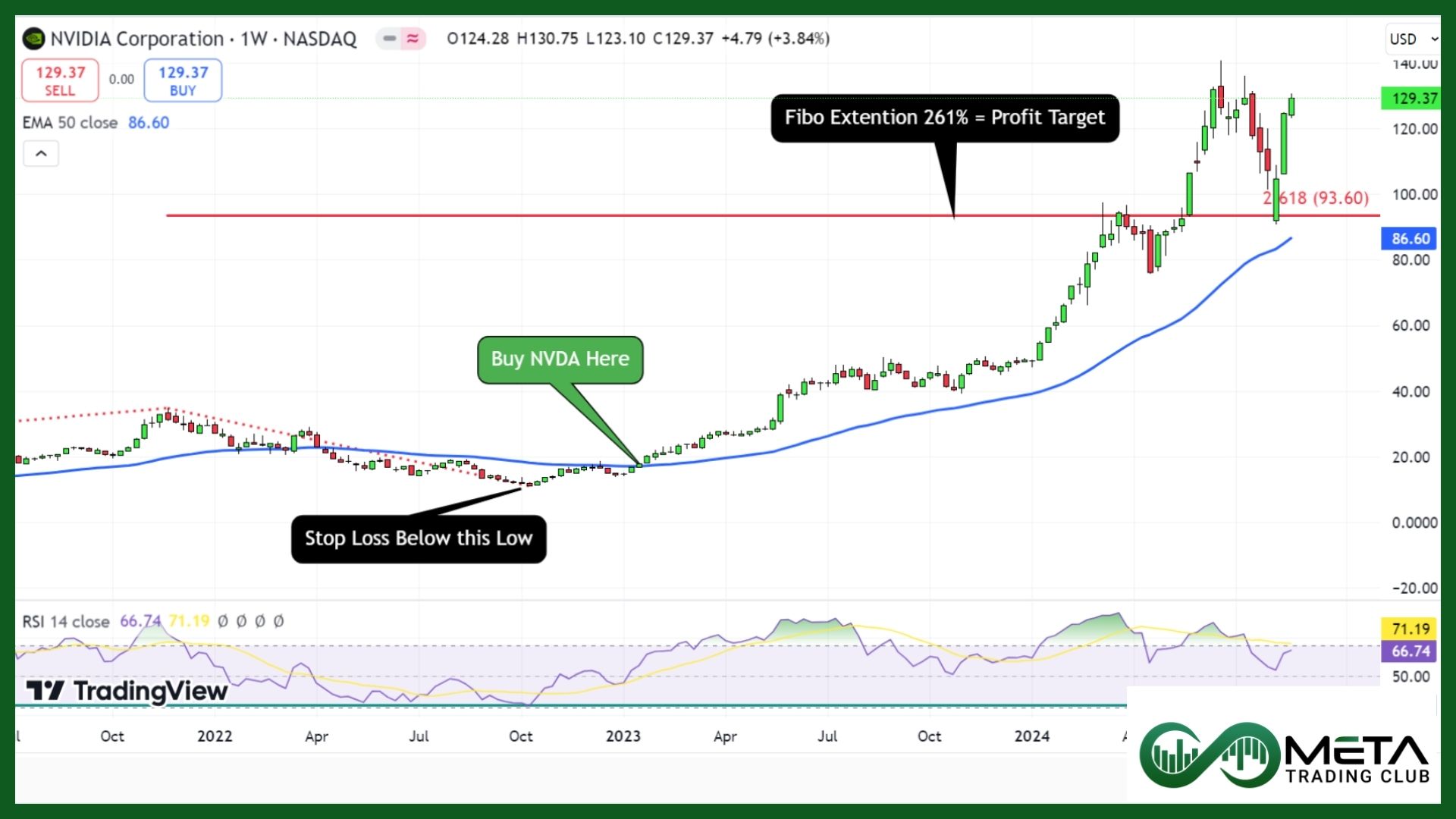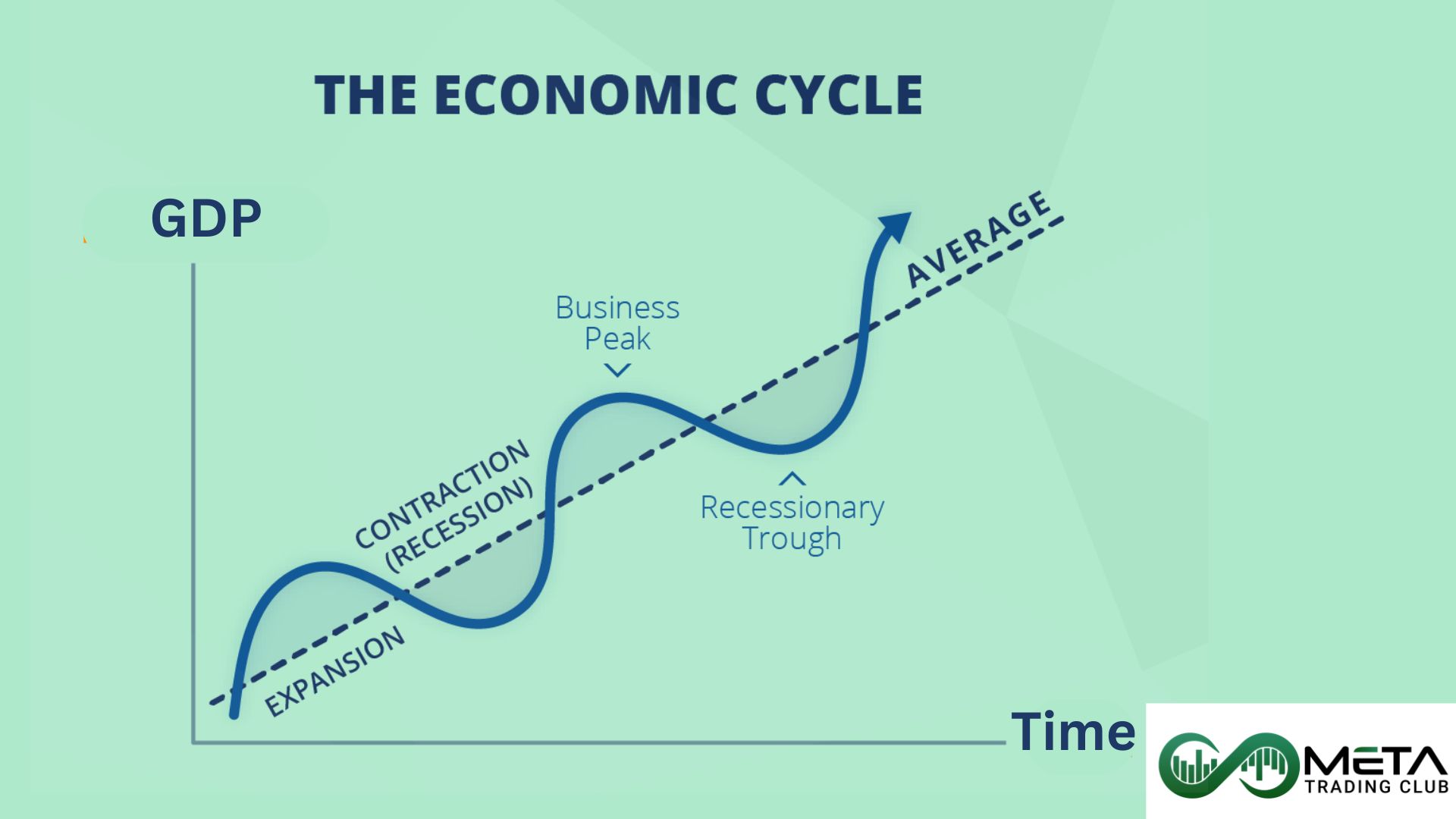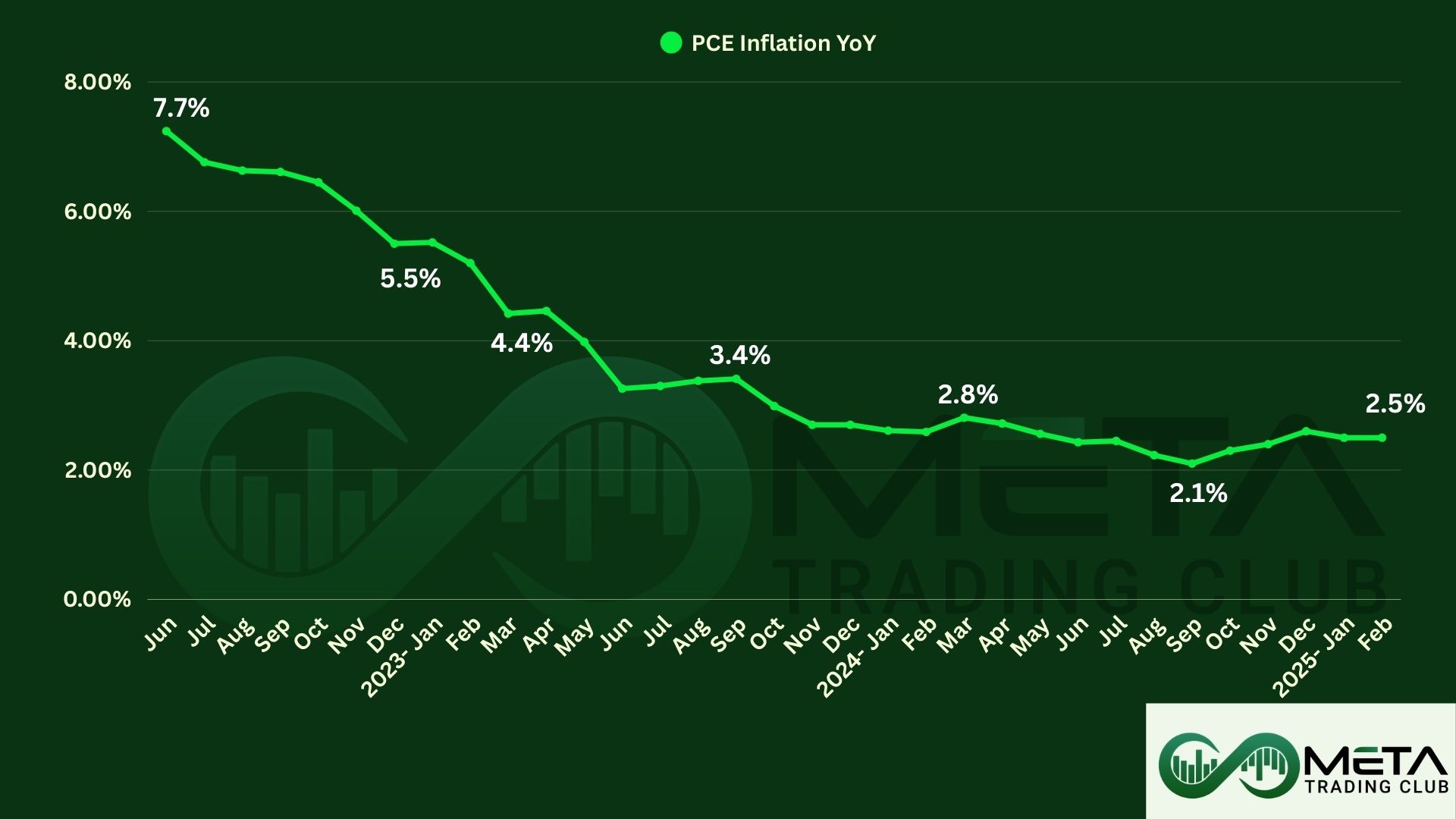In the evolving world of financial markets, position trading stands out as a robust strategy for those looking to achieve long-term profit. Unlike day trading or swing trading, position trading focuses on holding assets for extended periods, often months or even years. This approach allows traders to capitalize on significant market trends and avoid the noise of short-term fluctuations. Moreover, this comprehensive guide will explain the core strategies that can help you master position trading. Also, you’ll find expert tips and insights to enhance your trading skills.
Table of Contents
What Is Position Trading?
Position trading is a long-term investment strategy where traders hold positions in financial assets such as stocks, crypto currencies and other securities for extended periods. This holding period typically ranges from several weeks to months or even years. The primary goal is to capitalize on significant market trends and avoid the noise of short-term price fluctuations.
Of all the types of trading, position trading is the one with the longest holding times. Consequently, the profit potential is greater, but so is the risk. History is full of famous examples of great traders who made their fortune by implementing position trading strategies.
Key Features of Position Trading:
By focusing on these key characteristics, position traders aim to achieve substantial long-term gains while minimizing the risks associated with short-term trading. This strategy is well-suited for those who prefer a more hands-off approach and are patient enough to wait for their investments to mature.
1. Long-Term Focus
Position trading is characterized by its long-term perspective. Traders hold positions for extended periods, ranging from several weeks to months or even years. This approach allows them to capitalize on significant market trends and avoid the noise of short-term price fluctuations.
2. Trend Following
Position traders are trend followers. They identify and trade assets that are expected to benefit from long-term market trends. The goal is to buy and hold the investment until the trend peaks, capturing the majority of the price movement. This requires a thorough understanding of market dynamics and the ability to recognize emerging trends early.
3. Low Trading Frequency
Unlike day traders or swing traders, position traders make fewer trades. This reduced trading frequency minimizes transaction costs and emotional stress associated with constant market monitoring. Position traders typically place fewer than ten trades per year, focusing on high-conviction opportunities.
4. Risk Management
Effective risk management is crucial in position trading. Traders use stop-loss orders to protect against significant losses and manage their exposure to market volatility. Diversification is also a key strategy, spreading investments across different assets to mitigate risk.
5. Combination of Analyses
Position traders employ a combination of fundamental and technical analysis to make informed decisions.
- Fundamental Analysis: This involves evaluating economic indicators, market trends, and company-specific factors to identify assets with strong growth potential. Traders assess macroeconomic trends, industry dynamics, and financial health to determine the long-term prospects of an asset.
- Technical Analysis: Traders analyze price charts, trends, and patterns to determine optimal entry and exit points. Technical indicators like moving averages and the relative strength index (RSI) are commonly used to assist in decision-making.
6. Patience and Discipline
Position trading requires a high level of patience and discipline. Traders must be willing to hold their positions through market fluctuations and avoid the temptation to react to short-term price movements. This long-term approach demands a strong conviction in the underlying analysis and the ability to stay the course despite market volatility.
7. Market Awareness
Successful position traders maintain a deep understanding of the market and the factors that drive it. They stay informed about global events, economic indicators, and geopolitical developments that can impact their chosen assets. This awareness helps them make timely adjustments to their strategies and stay ahead of market changes.
How Does Position Trading Work?
Position trading is a long-term investment strategy where traders hold positions in financial assets for extended periods, typically ranging from several weeks to months or even years. The primary goal is to capitalize on significant market trends. Here is a step-by-step guide to position trading:
- Identifying Trends: Position traders start by identifying long-term market trends. They use a combination of fundamental and technical analysis to determine which assets are likely to appreciate over time.
- Fundamental Analysis: This involves evaluating economic indicators, company financials, and market trends to identify assets with strong growth potential.
- Technical Analysis: Traders analyze price charts, trends, and patterns to determine optimal entry and exit points. Technical indicators like moving averages and the relative strength index (RSI) are commonly used.
- Entering the Market: Once a promising trend is identified, traders enter the market by buying the asset. They aim to buy at a point where the trend is just beginning to gain momentum. For example, if a trader believes that a particular stock will benefit from a new industry trend, they might buy shares of that stock and hold them until the trend peaks.
- Holding the Position: Position traders hold their investments for an extended period, often ignoring short-term market fluctuations. This long-term approach allows them to ride out minor market corrections and focus on the overall trend.
- Risk Management: Effective risk management is crucial. Traders use stop-loss orders to protect against significant losses and manage their exposure to market volatility.
- Exiting the Market: Traders exit their positions when they believe the trend has peaked or is about to reverse. This decision is based on ongoing analysis and market conditions. For example, if the stock price has reached a level where the trader believes it has maximized its potential, they will sell the shares to lock in profits.
Example: Investing in a Tech Company
Imagine a position trader named Alex who believes that the technology sector will continue to grow over the next few years due to advancements in artificial intelligence and cloud computing. Alex decides to invest in a well-established tech company, Nvidia (NVDA), which has strong fundamentals and a promising growth outlook.
Steps Alex Takes:
Research and Analysis:
- Fundamental Analysis: Alex examines Nvidia’s financial statements, including its balance sheet, income statement, and cash flow statement. He finds that Nvidia has a strong revenue growth rate, healthy profit margins, and a robust pipeline of innovative products.
- Industry Analysis: Alex analyzes the technology sector and identifies trends such as increased adoption of AI and cloud services. He also considers macroeconomic factors like economic growth and interest rates that could impact the sector.
- Technical Analysis: Alex looks at Nvidia’s stock price charts and identifies a long-term upward trend. He uses moving averages and trend lines to confirm the trend’s strength.
Entering the Trade:
Based on his analysis, Alex decides to buy 20,000 shares of Nvidia at $17 per share, investing a total of $34,000. He believes that the stock will appreciate significantly over the next few years.
Holding the Position:
Alex plans to hold the shares for several years, riding out short-term market fluctuations. He sets a stop-loss order at $10 to protect against significant losses and a profit target at $93 to lock in gains if the stock price doubles.
During this period, Alex periodically reviews Nvidia’s performance and the overall market conditions to ensure his investment thesis remains valid.
Exiting the Trade:
After 15 months, Nvidia’s stock price has risen to $93 per share, driven by strong earnings reports and continued growth in the technology sector. Alex decides to sell his shares, realizing a substantial profit.
Calculation: Alex’s initial investment was $34,000 (20,000 shares at $17 each). Selling at $93 per share, he receives $186,000 (20,000 shares at $93 each), resulting in a profit of $166,000.
Position Trading Strategies
Position trading strategies aim to capture long-term gains. You can use strategies we discuss in day trading and swing trading for position trading but remember to use high time frame charts like daily and weekly. Strategies such as Momentum trading, Breakout trading, Range trading, Contrarian trading and Pullback trading. Also,here are some other popular position trading strategies:
Event Based Strategy
An event-based strategy is an investment approach that seeks to exploit pricing inefficiencies that may occur before or after a significant corporate or economic event. This strategy is often used by hedge funds, private equity firms, and experienced traders due to the expertise required to analyze and predict the impact of these events.
How to Use Event-Based Strategy?
Identifying Events:
- Corporate Events: These include mergers, acquisitions, bankruptcies, earnings announcements, spinoffs, and restructurings. For example, a merger announcement might lead to a temporary mispricing of the involved companies’ stocks.
- Economic Events: These include interest rate changes, economic data releases (like GDP or unemployment reports), and geopolitical events. For instance, an unexpected change in interest rates by a central bank can significantly impact currency and bond markets.
Analyzing Impact:
- Fundamental Analysis: Investors analyze the potential impact of the event on the company’s financial health and future prospects. This involves examining financial statements, market conditions, and competitive landscape.
- Market Sentiment: Understanding how the market perceives the event is crucial. Sentiment analysis can help predict short-term price movements based on investor reactions.
Timing the Trade:
- Pre-Event Positioning: Traders might take positions before the event, anticipating a specific outcome. For example, buying shares of a company expected to announce strong earnings.
- Post-Event Reaction: Traders might react to the event’s outcome, taking advantage of the immediate market reaction. For instance, shorting a stock if the earnings report is worse than expected.
Risk Management:
- Hedging: To mitigate risks, traders often use hedging strategies such as options or futures contracts. This helps protect against adverse price movements.
- Diversification: Spreading investments across different events and asset classes can reduce the overall risk.
Examples of Event-Based Strategies:
- Merger Arbitrage: This involves buying the stock of a company being acquired and shorting the stock of the acquiring company. The goal is to profit from the price convergence as the merger completion date approaches.
- Earnings Surprises: Traders might buy or sell stocks based on anticipated earnings surprises. For example, if a company is expected to report higher-than-expected earnings, traders might buy the stock in anticipation of a price increase.
- Regulatory Changes: Investing in industries expected to benefit from upcoming regulatory changes. For instance, buying stocks in renewable energy companies ahead of favorable government policies.
Event-based strategies can be highly profitable but also come with significant risks. They require a deep understanding of market dynamics, thorough analysis, and effective risk management techniques.
Cyclical strategy
A cyclical strategy involves investing in industries or stocks that are highly sensitive to the economic cycle. These industries tend to perform well during periods of economic expansion and struggle during economic downturns.
How to Use a Cyclical Strategy?
Understanding the Economic Cycle:
The economic cycle consists of four phases: expansion, peak, contraction, and trough.
- Expansion: A period of sustained economic growth, characterized by rising GDP, lower unemployment, and increasing consumer spending.
- Peak: The point at which economic growth reaches its maximum rate before starting to decline.
- Contraction: A period of economic decline, often marked by rising unemployment, decreasing consumer spending, and lower GDP.
- Trough: The lowest point of the economic cycle, where the economy bottoms out before starting to recover.
Identifying Cyclical Industries:
- Consumer Discretionary: Includes industries like automotive, luxury goods, and travel, which tend to do well when consumers have more disposable income.
- Industrials: Companies involved in manufacturing, construction, and heavy equipment often see increased demand during economic expansions.
- Materials: Industries that produce raw materials, such as mining and chemicals, benefit from increased industrial activity during economic growth.
Timing the Market:
- Entry Points: Investors aim to buy cyclical stocks during the trough or early expansion phase of the economic cycle when prices are low and growth potential is high.
- Exit Points: Investors sell these stocks during the peak or early contraction phase when prices are high and the risk of a downturn increases.
Sector Rotation:
This strategy involves shifting investments between cyclical and defensive sectors based on the economic cycle.
- Cyclical Sectors: Invest in sectors like consumer discretionary, industrials, and materials during economic expansions.
- Defensive Sectors: Shift to sectors like utilities, healthcare, and consumer staples during economic downturns, as these industries tend to be more stable.
Example:
Automotive Industry: During an economic expansion, consumers are more likely to purchase new cars, boosting the profits of automotive companies. An investor might buy shares of a car manufacturer during the early expansion phase and sell them as the economy approaches its peak.
A Carry Trade Strategy
A carry trade strategy is a popular trading approach, especially in the forex market, where traders borrow or sell a financial instrument with a low interest rate and use the proceeds to purchase a financial instrument with a higher interest rate. The goal is to profit from the interest rate differential between the two instruments.
Carry trades are best suited for sophisticated investors with a high tolerance for risk and a deep understanding of the forex market. They can be highly profitable but require careful monitoring and management of the associated risks.
How to Use a Carry Trade?
Borrowing in a Low-Interest Rate Currency:
Traders start by borrowing money in a currency with a low interest rate. For example, the Japanese yen (JPY) has historically had very low interest rates, making it a common funding currency.
Investing in a High-Interest Rate Currency:
The borrowed funds are then converted into a currency with a higher interest rate. For instance, the U.S. dollar (USD) often has higher interest rates compared to the yen.
The trader invests in financial instruments denominated in the high-interest rate currency, such as bonds, stocks, or even bank deposits.
Earning the Interest Rate Differential:
The profit from a carry trade comes from the difference between the interest rates of the two currencies. If the interest rate on the USD is 5.25% and the interest rate on the JPY is 0.25%, the trader earns the 5% differential.
Example:
Imagine a trader borrows 1,000,000 JPY at an interest rate of 0.25% and converts it to USD, which has an interest rate of 5.25%. The trader then invests the USD in a high-yielding asset. Over a year, the trader earns 5.25% on the USD investment while paying only 0.25% on the JPY loan, netting a profit from the interest rate differential.
Buy and Hold Strategy
The buy and hold strategy in position trading is a long-term investment approach where traders purchase assets and hold them for an extended period, often years or even decades. This strategy is based on the belief that, despite short-term market fluctuations, the value of the assets will increase over the long term.
The buy and hold strategy is ideal for investors who believe in the long-term growth of the market and prefer a more passive approach to investing. It requires patience, discipline, and a solid understanding of fundamental analysis.
How to Use a Buy and Hold Strategy?
Using the buy and hold strategy in position trading involves purchasing assets with the intention of holding them for an extended period, often years, to benefit from long-term market trends. By following these steps, you can effectively use the buy and hold strategy in position trading to achieve long-term financial growth:
Research and Analysis:
- Fundamental Analysis: Start by analyzing the financial health of the companies you are interested in. Look at their balance sheets, income statements, and cash flow statements. Evaluate key metrics such as revenue growth, profit margins, and debt levels.
- Industry Analysis: Understand the industry trends and the competitive landscape. Identify sectors that are expected to grow over the long term.
- Economic Indicators: Consider macroeconomic factors such as interest rates, inflation, and GDP growth that could impact your investments.
Selecting Investments:
- Quality Stocks: Choose companies with strong fundamentals, a history of profitability, and a competitive advantage in their industry.
- Diversification: Spread your investments across different sectors and asset classes to reduce risk.
Entry Points:
- Timing: While the buy and hold strategy is not about timing the market, it’s still important to enter at a reasonable price. Use technical analysis to identify good entry points, such as buying during market corrections or dips.
Holding the Position
- Patience: Hold your investments for the long term, ignoring short-term market fluctuations. The goal is to benefit from the overall growth of the market and the compounding of returns.
- Reinvest Dividends: If your investments pay dividends, consider reinvesting them to take advantage of compounding.
Monitoring and Review
- Periodic Review: Regularly review your portfolio to ensure that your investments are still aligned with your long-term goals. Make adjustments, if necessary but avoid frequent trading.
- Stay Informed: Keep up with news and developments related to your investments and the broader market.
Risk Management
- Stop-Loss Orders: Use stop-loss orders to protect against significant losses but set them wide enough to avoid being triggered by normal market volatility.
- Diversification: Continually ensure your portfolio is diversified to spread risk.
Example
Imagine you decide to invest in a diversified portfolio of tech stocks, healthcare stocks, and consumer staples. After thorough research, you buy shares of companies like Apple, Johnson & Johnson, and Procter & Gamble. You hold these shares for several years, reinvesting dividends and periodically reviewing your portfolio to ensure it remains aligned with your long-term goals. Despite short-term market fluctuations, you stay committed to your strategy, benefiting from the overall growth of these companies and the market.
What You’ll Need to Execute Position Trades
To successfully execute position trades, you’ll need a combination of knowledge, tools, and strategies:
1. Knowledge and Education
- Understanding of Markets: A solid grasp of how financial markets operate, including the stock market, forex, commodities, and bonds.
- Fundamental Analysis: Ability to analyze financial statements, economic indicators, and market trends to identify long-term investment opportunities.
- Technical Analysis: Knowledge of chart patterns, technical indicators, and trend analysis to determine optimal entry and exit points.
2. Capital
- Sufficient Funds: Position trading often requires a larger capital base compared to short-term trading due to the longer holding periods and potential for wider stop-loss levels.
3. Brokerage Account
- Reliable Broker: Choose a broker that offers low fees, a robust trading platform, and access to the markets you wish to trade.
4. Trading Platform
- Advanced Trading Platform: A platform that offers comprehensive charting tools, technical indicators, and real-time data is essential for effective position trading.
5. Risk Management Tools
- Stop-Loss Orders: Essential for protecting your capital by automatically closing a position at a predetermined loss level.
- Take-Profit Orders: These orders help lock in profits by closing a position once it reaches a certain profit level.
- Diversification: Spreading investments across different assets to reduce risk.
6. Research and Analysis Tools
- Economic Calendars: Keep track of important economic events and data releases that could impact your trades.
- News Feeds: Access to real-time news and analysis to stay informed about market developments.
- Analytical Software: Tools for conducting in-depth fundamental and technical analysis.
7. Trading Plan
- Clear Strategy: Define your trading strategy, including criteria for entering and exiting trades, risk management rules, and position sizing.
- Discipline: Stick to your trading plan and avoid emotional decision-making.
8. Patience and Discipline
- Long-Term Perspective: Position trading requires patience to hold positions for extended periods and the discipline to stick to your strategy despite market fluctuations.
By ensuring you have these elements in place, you’ll be well-equipped to execute position trades effectively and increase your chances of long-term success.
Advantages of Position Trading
Position trading combines the benefits of long-term investing with the potential for significant gains, making it an attractive strategy for many traders. Here are the key advantages of position trading:
- Time Efficiency: Position trading requires less frequent monitoring compared to other trading styles like day trading or swing trading. Once a position is established, traders can focus on other activities while periodically checking their investments.
- Potential for Significant Gains: By capturing the bulk of a trend’s movement, position traders can achieve substantial profits. Holding positions for longer periods allows traders to benefit from major market trends and significant price movements.
- Reduced Transaction Costs: Since position traders make fewer trades, they incur lower transaction costs, such as brokerage fees and commissions. This can lead to higher net returns over time.
- Lower Stress Levels: Position trading is generally less stressful than short-term trading styles. Traders are not required to make quick decisions based on short-term market fluctuations, which can reduce emotional stress and improve decision-making.
- Focus on Fundamentals: Position traders often rely on fundamental analysis to make their investment decisions. This approach allows them to invest in assets with strong long-term growth potential, based on economic indicators, company performance, and market trends.
- Diversification Opportunities: With a long-term focus, position traders can diversify their portfolios across different asset classes, sectors, and regions. This diversification helps spread risk and can lead to more stable returns.
- Tax Efficiency: In many jurisdictions, long-term capital gains are taxed at a lower rate than short-term gains. By holding positions for extended periods, position traders can benefit from more favorable tax treatment.
- Patience and Discipline: Position trading encourages a disciplined approach to investing. Traders learn to be patient and stick to their strategies, avoiding impulsive decisions based on short-term market movements.
Disadvantages of Position Trading
While position trading offers several advantages, it’s essential to be aware of these potential drawbacks and prepare accordingly. Here are some key disadvantages of position trading:
- Capital Tied Up: Position trading requires holding investments for extended periods, which means your capital is tied up and not available for other potentially profitable opportunities. This can lead to opportunity costs, where you might miss out on short-term gains from other trades.
- Risk of Trend Reversals: While position traders aim to ride long-term trends, there’s always the risk that minor fluctuations ignored by traders can unexpectedly turn into significant trend reversals. This can lead to substantial losses if not managed properly.
- Market Volatility: Markets can be highly volatile, and long-term positions are exposed to this volatility. Unexpected economic events, geopolitical developments, or market sentiment shifts can adversely affect your positions.
- Higher Capital Requirements: Position trading often requires more capital investment than short-term trading styles. This is because stop losses are usually set wider to accommodate long-term market fluctuations, necessitating a larger initial investment to make the trade worthwhile.
- Accumulated Swap Fees: Holding positions for long periods can lead to accumulated swap fees, especially in forex trading. These fees can add up over time and reduce overall profitability.
- Patience and Discipline Required: Position trading demands a high level of patience and discipline. Traders must be willing to hold their positions through market fluctuations and avoid the temptation to react to short-term price movements. This can be challenging for those who prefer more active trading.
- Potential for Lower Returns: Compared to more active trading styles, position trading might result in lower returns in the short term. The focus on long-term trends means that quick profits from short-term price movements are often missed.
Final Word
Position trading offers a unique opportunity for traders to achieve long-term financial success; it’s about understanding the market’s long-term trends and making informed decisions that can lead to substantial gains over time. By focusing on the bigger picture and maintaining a disciplined approach, traders can navigate the complexities of the financial markets with confidence. Remember, patience and persistence are key virtues in position trading. Stay informed, stay patient, and let your investments grow.
By employing well-researched strategies, managing risks effectively, and maintaining a long-term perspective, you can maximize your returns and build a robust investment portfolio. As you embark on your position trading journey, boost your trading skills by participating in our Incubator program. Whether you’re a novice or an experienced trader, this program can help you achieve your financial goals and secure a prosperous future.
FAQs
Position trading is a strategy where traders hold positions for an extended period, typically weeks or months, to capitalize on long-term trends. This approach focuses on significant price movements rather than short-term fluctuations.
Yes, position trading can be highly profitable if done correctly. It requires careful analysis, risk management, and a well-defined strategy to gain substantial returns over the long term.
Position trading involves holding assets for long-term (months, or even years) to capitalize on long-term trends, relying heavily on fundamental analysis. Swing trading, on the other hand, focuses on short- to medium-term price swings, typically holding positions for a few days to weeks, and uses technical analysis to identify trading opportunities.
To choose stocks for position trading, look for companies with strong fundamentals, such as consistent earnings growth, solid financial health, and a competitive advantage. Additionally, consider industry trends and economic conditions that could impact the stock’s long-term performance.
For positional trading, weekly and daily charts are ideal. They help identify long-term trends and key support and resistance levels, providing a broader view of market movements.



















